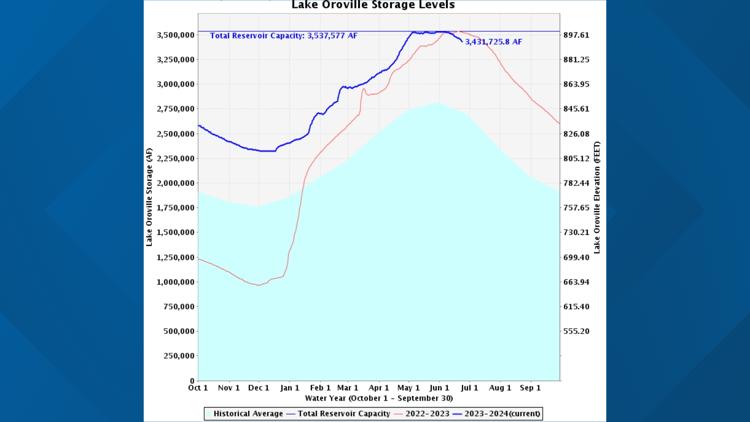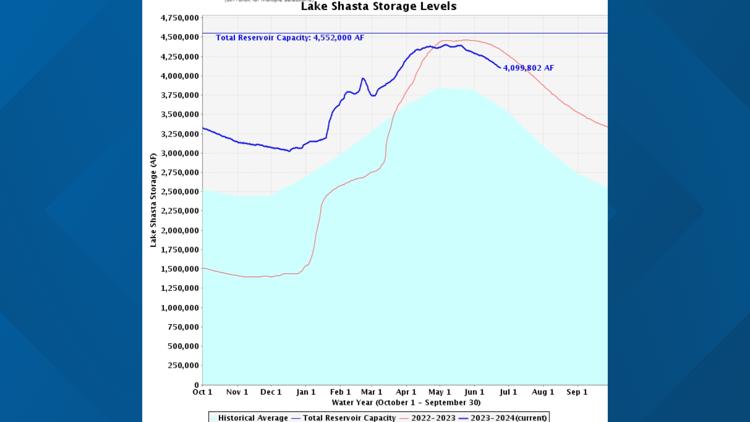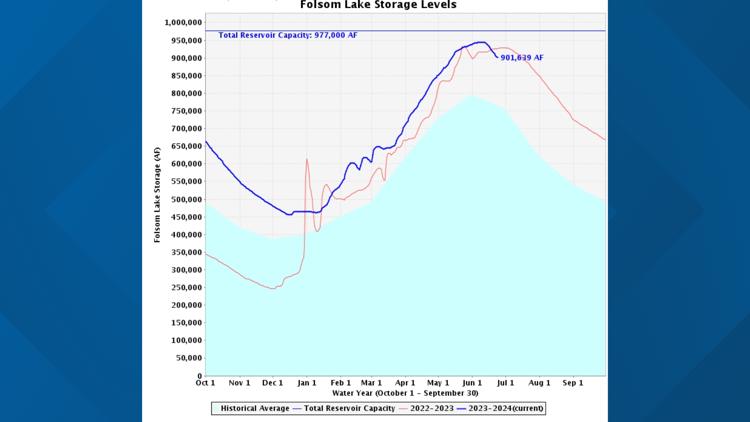SACRAMENTO, Calif — Northern California's reservoirs remain in great shape and well above historical average heading into late June.
As of June 24, Shasta is at 90% capacity (114% of historical average), Oroville is at 97% (126% of historical average) and Folsom is 92% full (118% of historical average).
Shasta, Oroville, and Folsom all peaked at near capacity earlier this month after an impressive Sierra snowpack melted and flowed into the bodies of water. The Sierra snowpack got off to a slow start but a persistent El Nino-like weather pattern allowed the Sierra snowpack to catch up to normal and even end up above average across most of the Sierra.
CA reservoir levels 6/25
Lake Tahoe also reached capacity in early June for the first time since 2019. According to the Nevada Water Outlook Supply Report, the lake has enough water to meet demand for the next three years even if the snowpacks are below normal.
Now that this past winter’s snowpack is mostly gone, reservoir levels are beginning to drop, which is to be expected this time of year. Folsom Lake typically peaks around June 1 before outflow begins to outpace the inflow provided by the snowpack.
The statewide snowpack took longer to melt last year due to record snow amounts and a very unusually cool June slowing the melting process.
California’s reservoirs are vital to supplying the state with water for every aspect of life and society during the dry summer months.







